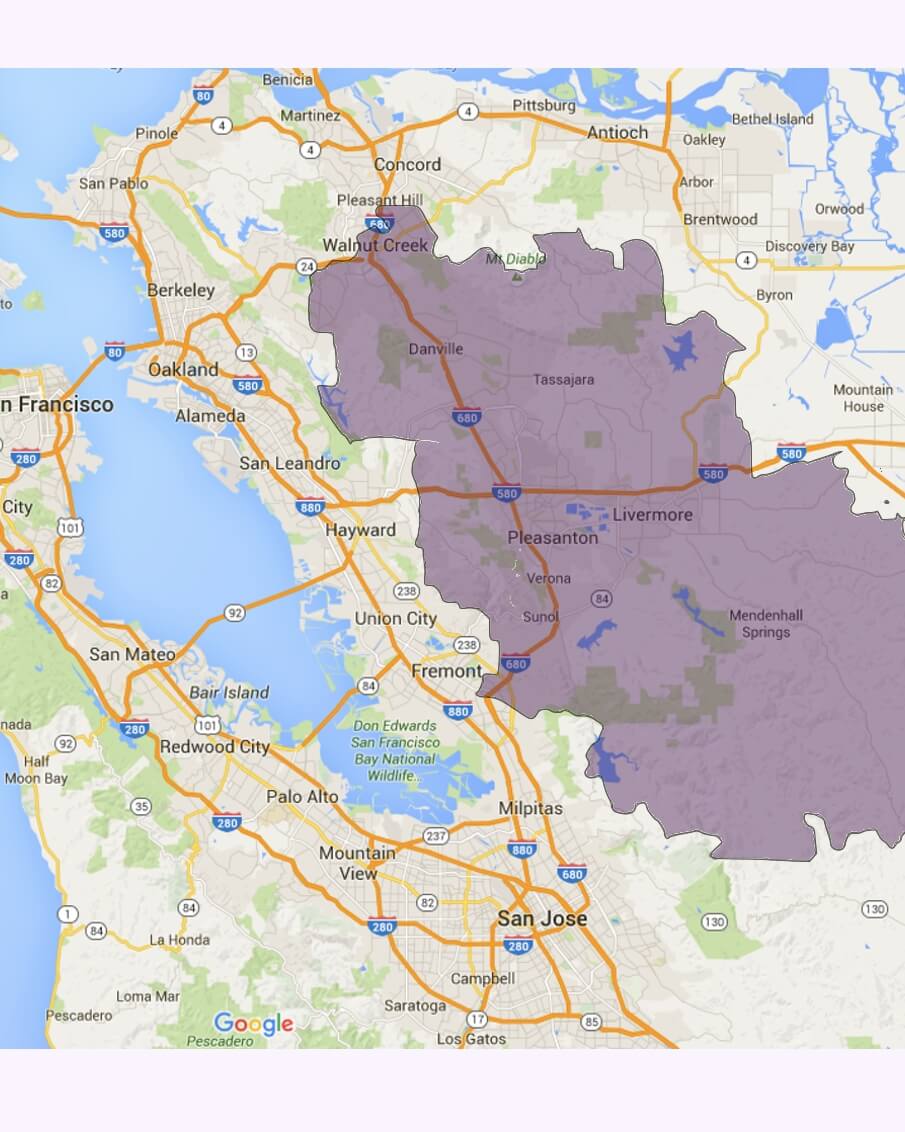
The Bay Area’s “Tri-Valley” region
High housing costs aren’t just pushing residents into far-flung exurbs in seek of affordable homes. Businesses, too, are locating far from city centers to take advantage of cheaper rents and lower housing costs for their employees.
The business groups Bay Area Council Economic Institute and Innovation Tri-Valley Leadership Group released a new report documenting the effect in the San Francisco Bay Area, as the San Francisco Chronicle reported:
The East Bay’s Tri-Valley region saw jobs grow 35 percent between 2006 and 2016, outpacing San Francisco and Silicon Valley, according to a new report.
During the same period, San Francisco had 31 percent job growth, Silicon Valley had 19 percent and California overall had 8 percent.
The Tri-Valley cities of Danville, Dublin, Livermore, Pleasanton and San Ramon benefited from the presence of two federal laboratories, along with less expensive housing and office costs compared to the Bay Area’s urban centers, the report said. At the same time, the Tri-Valley and the rest of the Bay Area continue grappling with low housing supply and traffic congestion.
Some of this dynamic is the natural progression of cities. As space in traditional city centers comes at a premium, employers seek to find more affordable regions in outlying areas.
But much of it is attributable to the failure of local governments in job-rich areas to allow enough housing to be built to keep pace with jobs. As a result, employers find themselves needing to go to outlying areas not just for cheaper office rents, but to meet middle class employees where they can find a relatively affordable home.
From an environmental perspective, this job sprawl means worsening traffic, air pollution, and paving over of valuable open space and agricultural land. Yet another reason to change our land use policies in job-rich urban centers to allow sufficient housing.


